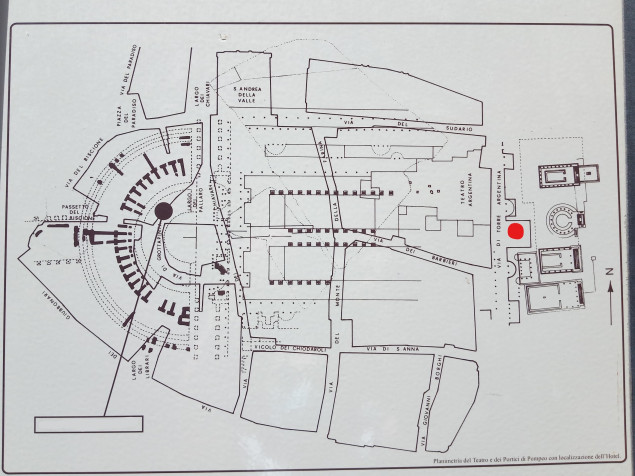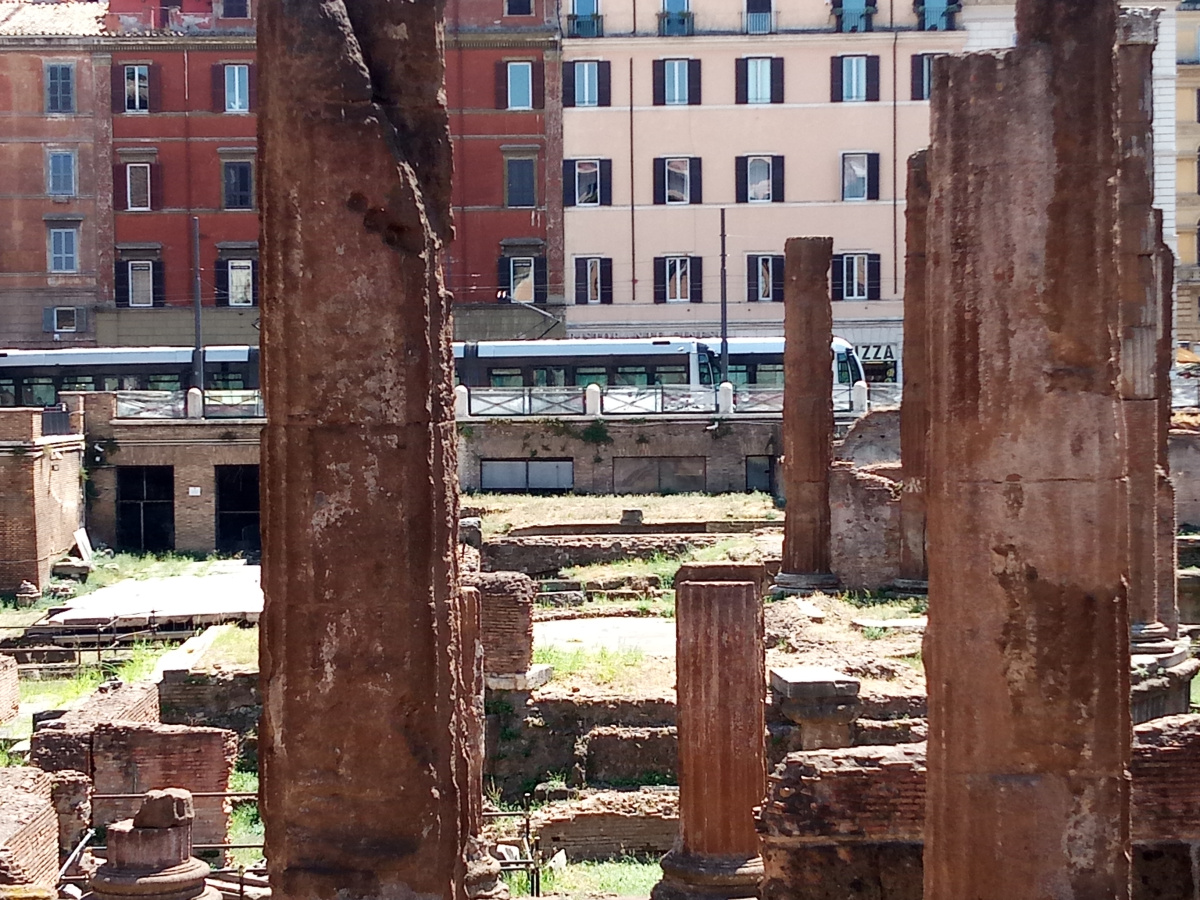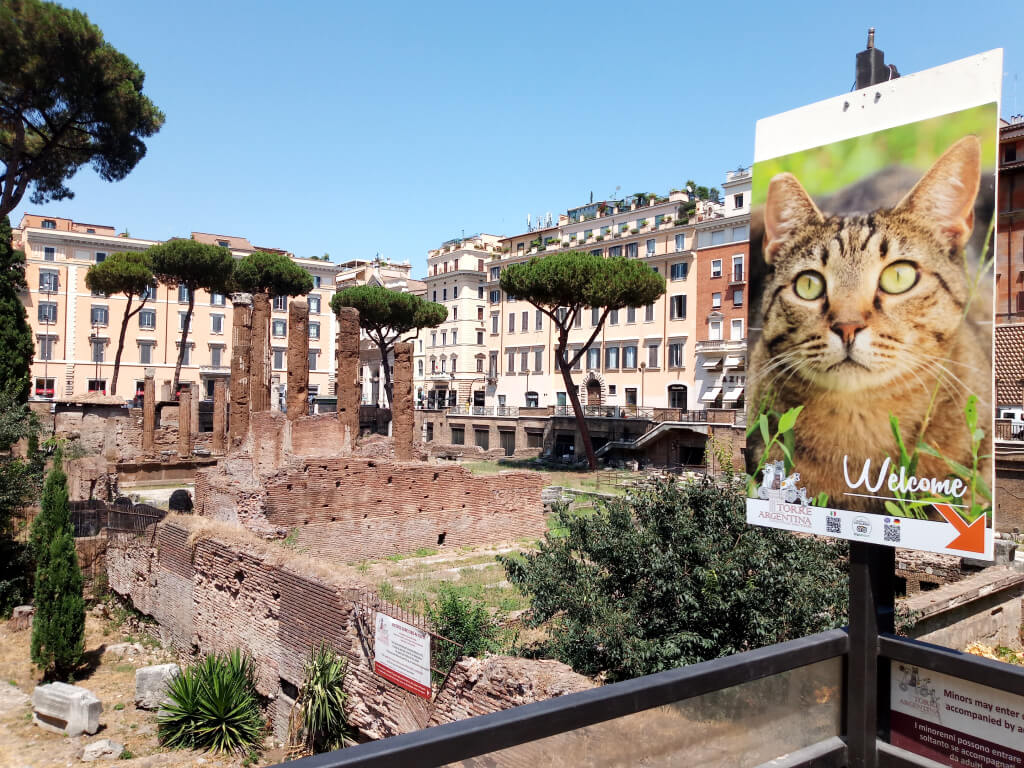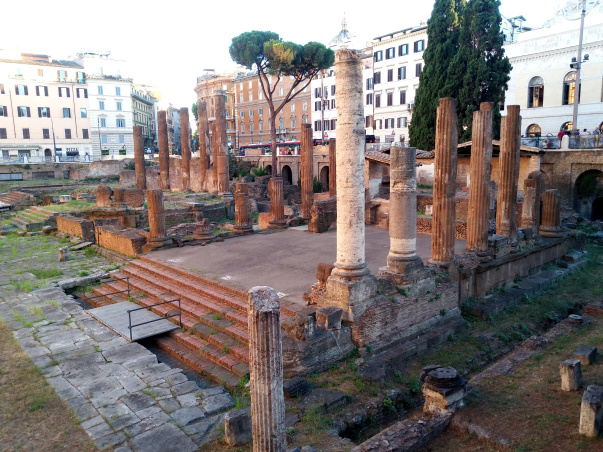
“Et tu, Brute? Then fall, Caesar!” According to William Shakespeare, these are the last words Caesar spoke before he died. But where exactly did Julius Caesar’s body fall?
According to the historical sources, the great dictator was assassinated in the Curia by some senators, the so-called “conspirators”. Among the assassins, the figure of Brutus, the son of Servilia – “historical” lover of Caesar – known by the dictator since he was a child, stands out.
The Curia was the place where the meetings of the Senate took place and was located in the Roman Forum. But on March 15, 44 B.C., when Caesar was assassinated, the Curia of the Forum was temporarily closed for restoration after a fire.
According to historical sources, the only Curia that existed, beyond the one just mentioned, was the Curia of the Theatre of Pompey, the first masonry theatre inaugurated in Rome in 55 B.C.
Pompey, Caesar’s great political adversary, had built a huge portico adorned with statues behind the scene – one of these is probably the so-called Abbot Luigi, one of the six Talking Statues of Rome (I talk about them here) – at the end of which there was a rectangular exedra, used as a temporary Curia by the Senators.
At the centre of the Curia there was the statue of Pompey. According to tradition – which doesn’t lack in irony – Caesar fell in front of it. Today Pompey’s statue is kept in Palazzo Spada.
This Curia was walled up forever in 32 B.C. by Caesar’s successor, Augustus, during the restoration works of the Theatre and called “locus sceleratus” (from Latin, past participle of “scelerare” = stained with a crime), cursed place.
It came to light again only in 1926, during some building works that led to the discovery of the Sacred Area of Largo Argentina as we see it today, with its four temples of republican age oriented to the east with the Curia of Pompey exactly behind them.
Nowadays above the Curia there is via di Torre Argentina, the street that divides the excavated Sacred Area and the Argentina Theatre: the theatre founded in 1732 and built on the ruins of the “sceleratus” place. The Curia ends or begins exactly where you see this beautiful Pinus Pinea (Pine tree), a very typical tree here in Rome. The Sacred Area of Largo Argentina is also famous because a feline colony lives there. Inside the so-called Temple D, for the most part still under Via Florida, the street where the tram passes to Trastevere or Piazza Venezia there is an Association that takes care of them. Until the early years of the last century “food for stray cats” was an item of the Municipal Budget.
Curiosity n°1: people who take care of cats are mainly women in Rome and – remembering the dialectal suffix -ARO which translates the Italian suffix -AIO (I talk about it here) – they are called gattare (from gatto = cat).
Curiosity n°2: if you look the area of the Theatre of Pompey from above with Google maps, you can easily recognize the shape of this building as, as usual, modern houses are build on its ruins.
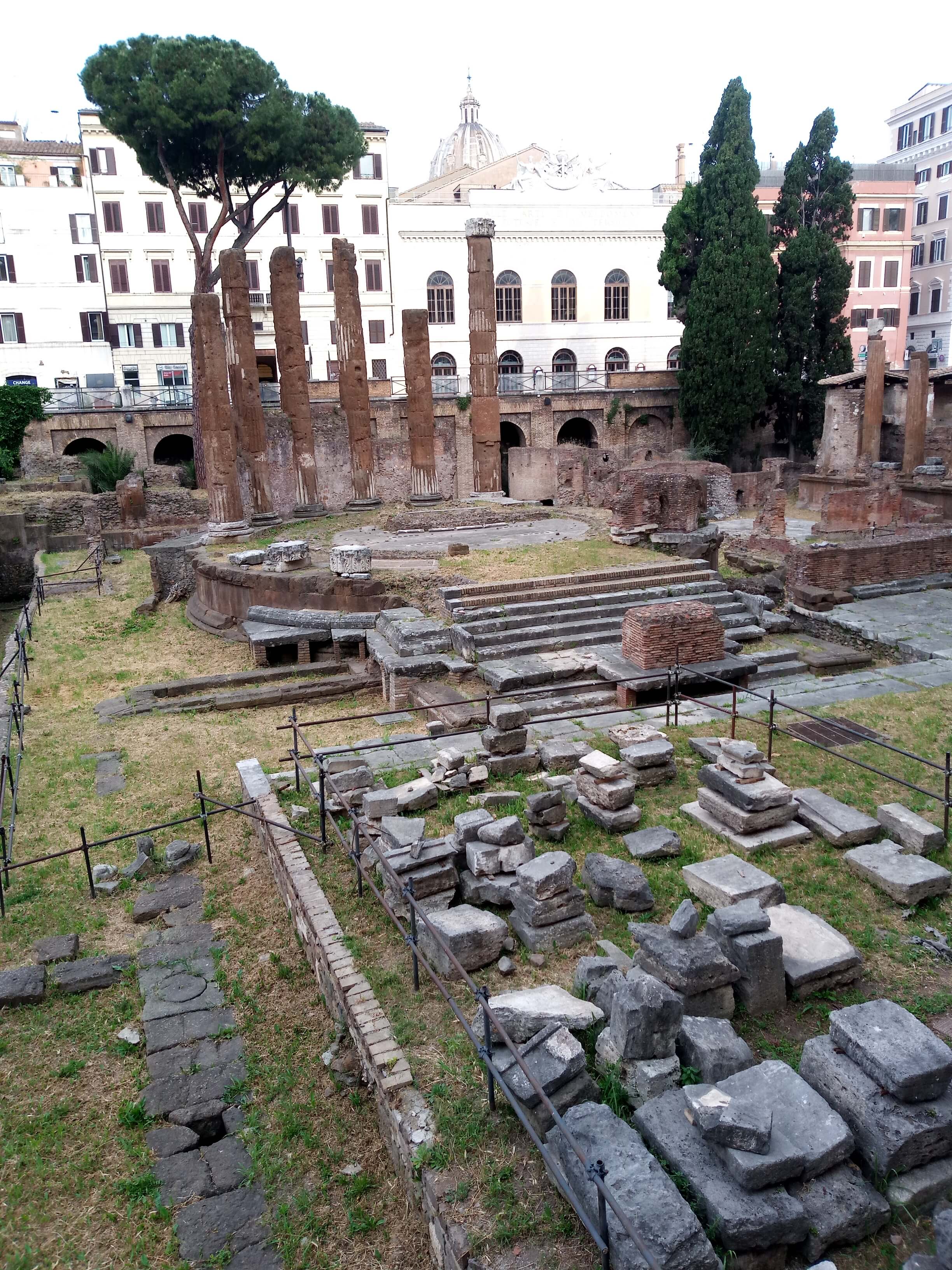

Federica
